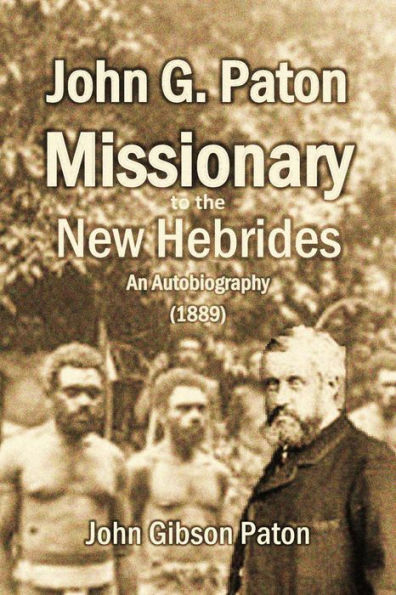"The best-known of the South Seas missionaries, who became immortalized largely because of his own play-by-play coverage of natives clubbing missionaries." - From Jerusalem to Irian Jaya (2011)
"Fierce cannibals...miraculous escapes from death by Mr. Paton seem to be genuine miracles." -Berkshire County Eagle, May 15, 1890
"He persisted in his dangerous work, even when his companions...were murdered in cold blood beside him...in constant peril of his life." -Glasgow Herald, Mar. 7, 1889
"Paton...by reason of his control of the savages, has been called the King of the Cannibals." -St. Louis Post-Dispatch, Dec. 17, 1899
"Missionary John G. Paton is protected from cannibals by a band of angels as an answer to prayer." -John: That You May Believe (2014)
"Paton...told a thrilling story involving the protective care of angels. Hostile natives had surrounded his mission headquarters..." -Billy Graham
How did missionary John G. Paton survive dozens of attempts on his life by "cannibals" of New Hebrides Islands when all of his assistants were murdered? Did a legion of protective angels have his back?
The 1889 autobiography of John G. Paton (1824–1907), titled "John G. Paton, Missionary to the New Hebrides,"
contains everything necessary to make it a missionary classic.
Born into a Christian family near Dumfries in 1824, Paton's early years were marked by a struggle against poverty. He was self-educated, and the training ground for his life's work was the slums of Glasgow where he laboured with success as a city missionary.
With 'the wail of the perishing heathen in the South Seas' continually sounding in his ears, he prepared himself to serve overseas and was ordained as a missionary to the New Hebrides in 1858. This group of thirty mountainous islands, so named by Captain Cook, with its unhealthy climate, was then inhabited by "savages and cannibals."
The first attempt to introduce Christianity to them resulted in John Williams and James Harris being clubbed to death of his wife and child within months of their arrival. Against the "savagery and the superstition," despite the trials and the tragedies, Paton persevered and witnessed the triumph of the gospel in two of these South Sea islands. His life is almost without parallel in missionary annals and his account of it is moving and gripping.



